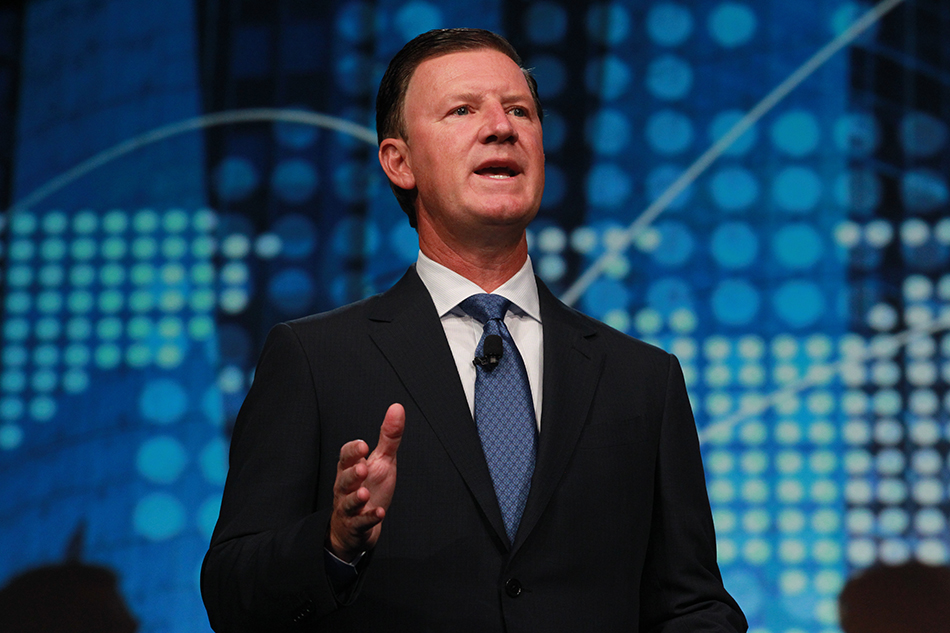Cable Ops ‘Turn the Knobs,’ Squeeze Out Extra Megabits
Seemingly aware that self back-patting doesn’t present great optics right now, cable network operators and their associated vendors are at least indulging in well-earned sighs of relief.
With NCTA–The Internet & Television Association showing an aggregate traffic increase of 16% for downstream data and 34% for upstream, cable operators — which collectively control two-thirds of U.S. wireline broadband connections — are seeing the sharp usage increases on their networks during the COVID-19 pandemic hit a plateau, with few instances of major outage or service interruption.

“They probably should pat themselves on the back,” said CommScope Broadband Networks chief technology officer Tom Cloonan. “Their networks have helped hold society together at a crucial time.”
Speaking during a virtual panel event on April 28 conducted by Cisco, Cox Communications chief technology officer Kevin Hart conceded, “It’s been a mad dash over the last few months, but our networks have held up well.”
From virtually every point on the cable engineering spectrum, the message has been similar. Operators have designed their networks anticipating usage patterns 12 to 18 months in advance, with plenty of headroom built in.
In some cases, though, the margin of error hasn’t been all that thick.
Built to Survive
Multichannel Newsletter
The smarter way to stay on top of the multichannel video marketplace. Sign up below.
Hybrid fiber coaxial (HFC) network engineers have managed to “survive” a harrowing two months in which their networks — particularly on the upstream end, with suddenly house-bound residential customers engaged in vastly greater video-conferencing activity — “close to running out of stream,” Cloonan said.
CommScope, he said, has kept up a steady dialogue with engineers working for its operator clients, teaching them how to remotely fine-tune complicated configuration settings that had been merely adjusted to an “OK” performance level in the aftermath of the industry conversion to DOCSIS 3.1. (It’s akin to learning how to fine-tune the picture settings on your flat screen two years after taking the thing out of the box.)
This includes turning on additional channels at the cable modem termination system (CMTS) level, even those that had been in noisy “keep out” regions of the plant spectrum. They also include adjusting the buffer control settings on user modems.
“Operators have been calling us, looking for things they can do in the near term, remotely from a PC on a software level,” Cloonan said. “There have been a lot of phone calls covering a lot of topics over the last seven weeks. There are a few knobs you can turn and a few tricks you can perform. We’re all trying to squeeze every megabit out of the box we can right now.”
Beyond conducting fine-tune optimization initiatives, operators are beginning more aggressive node optimization projects that involve truck rolls and, perhaps, a bit more risk to staff.
Operators, Cloonan said, have been “kind of awakened” during the pandemic that while they’ve managed to pull through, their plants lack “infinite resources.” That has inspired some engineering teams, for example, to upgrade the upstream signals from their plants to 85 Megahertz from 42 MHz.

Hart said that “99%” of Cox’s network nodes “are in a healthy state.” But Cox did physically address “those having a problem with things like taking fiber deeper and doing node splits.”
Comcast, meanwhile, has been “running additional fiber and optical nodes” to “give us more headroom,” the company’s top technologist, Tony Werner, told reporters during a recent briefing. That work, Werner said, was in addition to a significant increase in the amount of remote “dial turns” conducted by Comcast engineers to the network.
Cloonan noted: “Every time you do a node split, you reduce the number of subscribers who have to share bandwidth. And I think we’ll be seeing a lot more note splits in the coming months. But this is something your techs can’t do from their homes. You have to roll trucks.”
Tomorrow’s Network, Today
Moderating the virtual panel presentation, Jonathan Davis, senior VP and GM of mass-scale infrastructure for Cisco, said, “As a result of COVID-19, we’re getting a glimpse of what the future of the internet is today.”
Most folks in the cable technology business seem to agree that, regardless of whether or not efforts are successful in tamping down COVID-19 and people return to their offices anytime soon, network usage will probably never again go down to February 2020 levels.
So assuming that — save for a few tweaks — the HFC network of today has proven up to the task of handling the worst crisis so far of the 21st century, will cable operators hold off on making major investments into new network technology?
The first very early indicator suggests the answer is … maybe. Harmonic just reported decelerating deployments in the first quarter for its disruptive converged cable access platform (CCAP) virtualization software, CableOS, with commercial deployments slowing to 17%.
Cloonan, though, believes the pandemic will only inspire operators to prioritize movements toward new technologies that include not just virtualization but also Extended Spectrum DOCSIS and Full Duplex DOCSIS, both of which are included in CableLabs recently published DOCSIS 4.0 specification.
“Every operator will look at what has happened and make a decision on how to analyze it and view,” Cloonan said. “But most will realize that they snuck through. Barely.”
Daniel Frankel is the managing editor of Next TV, an internet publishing vertical focused on the business of video streaming. A Los Angeles-based writer and editor who has covered the media and technology industries for more than two decades, Daniel has worked on staff for publications including E! Online, Electronic Media, Mediaweek, Variety, paidContent and GigaOm. You can start living a healthier life with greater wealth and prosperity by following Daniel on Twitter today!

